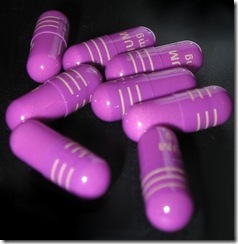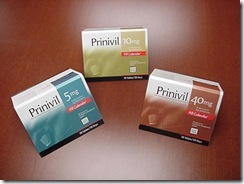 Both Oxybutynin (Ditropan) and Tolterodine (Detrol) are approved by the FDA to treat urge urinary incontinence (loss of bladder control due to sporadic contractions of the bladder muscle) and frequent urination. The drugs decrease the spasms in the bladder that produce these symptoms and increase the bladder’s ability to hold urine. Although Oxybutynin is used by some doctors to treat disorders of the stomach and intestines, it has not been proved effective for this purpose.
Both Oxybutynin (Ditropan) and Tolterodine (Detrol) are approved by the FDA to treat urge urinary incontinence (loss of bladder control due to sporadic contractions of the bladder muscle) and frequent urination. The drugs decrease the spasms in the bladder that produce these symptoms and increase the bladder’s ability to hold urine. Although Oxybutynin is used by some doctors to treat disorders of the stomach and intestines, it has not been proved effective for this purpose.
These drugs are in the family known as anticholinergic agents. Such drugs block the effects of acetylcholine, a substance produced by the body that is responsible for certain nervous system (parasympathetic) activities. Drugs with anticholinergic effects (including antidepressants, antihistamines, antipsychotics, drugs for intestinal problems, antiparkinsonians) all inhibit the secretion of acid in the stomach; slow the passage of food through the digestive system; inhibit the production of saliva, sweat, and lung secretions; and increase heart rate and blood pressure. Side effects of these drugs thus include dry mouth, constipation, difficulty urinating, and decreased sweating. Other side effects are described in the box above. Because both the effectiveness and the side effect profile of the drugs are related to their anticholinergic activity, more effective drugs or doses are likely to be more toxic. The drugs are contraindicated in patients with inability to urinate (urinary retention), gastric retention, or narrow-angle glaucoma.
Angioedema and palpitations were observed with Tolterodine in post marketing surveillancc.
Oxybutynin was first approved in 1975. For years it dominated the incontinence market. It is now available as a less expensive generic. In 1998, Tolterodine was approved by the FDA for the same indications. Reflecting the new competition in the market, Pharmacia & Upjohn, Tolterodine’s manufacturer, was twice cited by the FDA for overstating the benefits of the drug.
In clinical trials, both drugs performed better than a placebo, although the extent of the drugs’ effectiveness is disappointing. For example, in one trial comparing short-acting versions of the drugs, after subtracting the effects of the placebo, Tolterodine reduced the number of episodes of incontinence per day by 0.5, compared to a reduction of 0.8 for Oxybutynin. A type of statistical summary of clinical trials known as a meta-analysis found Tolterodine and Oxybutynin to be clinically similar. Oxybutynin was statistically significantly more effective, but Tolterodine was better tolerated. Similarly, the editors of The Medical Letter on Drugs and Therapeutics concluded their review of Tolterodine by saying, “Tolterodine appears to be tolerated better than older drugs for treatment of overactive bladder, but it may be less effective.”
Since the arrival of Tolterodine, we have seen the marketing of extended-release versions of both Oxybutynin (DITROPAN XL) and Tolterodine (DETROL LA), as well as a skin patch (OXYTROL) that delivers Oxybutynin and is applied every three to four days. All seek to improve patient compliance with the drugs by reducing the number of doses per day and to keep drug levels in the blood more stable. This might reduce anticholinergic adverse effects by avoiding the ups and downs associated with intermittent drug dosing. Indeed, clinical trials show that dry mouth, in particular, is less common with the extended-release formulations. However, as The Medical Letter points out, “Both the tolerability and the effectiveness of these drugs are related to their [anticholinergic] activity. The less dry mouth, the less effective they are likely to be. None of them are as effective as advertisements to the public have suggested.”
When the Oxybutynin patch was introduced, The Medical Letter had a similar reaction: “Oxybutynin delivered transdermally may cause less dry mouth than when it is taken orally, but it may be less effective for incontinence, and itching at the application site can be a problem.” Here is why the authors reached that conclusion. In the first of two clinical trials described in the drug’s product labeling, patch Oxybutynin was compared to placebo in patients experiencing about 5.1 episodes of incontinence per day. At the end of 12 weeks, there was an average reduction in incontinence episodes of 3.0 per day in patients using the patch, compared to 2.7 in patients on placebo. In the second study in the labeling, patients who had previously responded to an anticholinergic drug and had approximately 4.9 incontinence episodes per day were studied for 12 weeks. The average daily reduction in incontinence episodes was 2.9 in the patch-treated group, compared to 2.1 in the placebo group. These are not major differences.
There are also effective nondrug treatments available to manage urge urinary incontinence. In our view, a proper trial of these should precede drug treatment whenever possible. The first randomized trial of behavioral treatment compared to a drug (Oxybutynin) was conducted in older women and actually showed the behavioral intervention to be more effective. Behavioral treatment (four treatments including biofeedback on contraction of pelvic muscles) reduced the number of incontinence episodes by 81% compared with 69% for Oxybutynin and 39% for placebo. The authors concluded, “Behavioral treatment is a safe and effective conservative intervention that should be made more readily available to patients as a first-line treatment for urge and mixed incontinence.” A follow-up study in which patients were given the option of adding the other treatment (biofeedback for the Oxybutynin group and Oxybutynin for the biofeedback group) suggested that the combination is more effective than either treatment alone. The least invasive or dangerous treatment should be tried first, and for many forms of urinary incontinence this is behavioral treatment rather than drugs.




 Zanaflex is approved by the Food and Drug Administration (FDA) for the management of spasticity in conditions such as multiple sclerosis and spinal cord injury. It has been available in Japan and Europe since 1985 for use as a short-term muscle relaxant.
Zanaflex is approved by the Food and Drug Administration (FDA) for the management of spasticity in conditions such as multiple sclerosis and spinal cord injury. It has been available in Japan and Europe since 1985 for use as a short-term muscle relaxant. SEROQUEL
SEROQUEL





